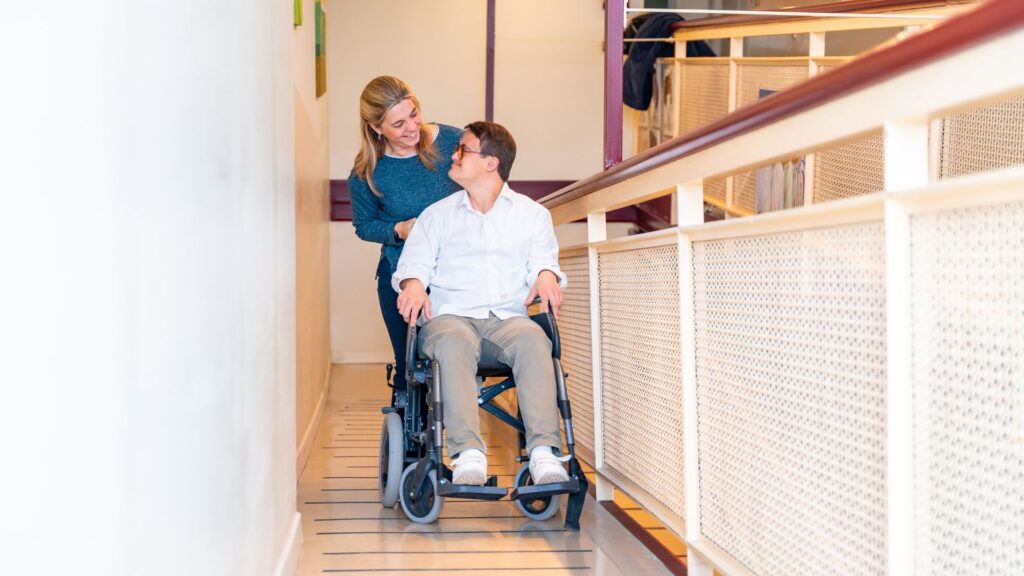
Home accessibility isn’t a luxury; it’s a life-changing necessity.
But when it comes time to make a decision, many families face the same question:
What’s best for my home—a ramp, an elevator, or a stairlift?
The answer depends on several factors: your home’s design, your budget, and your physical needs. In this article, we’ll help you understand the differences so you can choose the perfect solution, confident in your knowledge.
1. Ramps: The Most Practical and Accessible Option
Ramps are one of the most common and versatile solutions for improving access to homes, entrances, or garages.
Advantages:
- They are ideal for wheelchair or mobility scooter users.
- They are quick and easy to install, especially modular aluminum ramps.
- They require little maintenance and can be customized to fit the available space.
- They are a more economical option compared to an elevator.
Disadvantages:
- They require more space (for every inch of height, at least 12 inches of ramp is needed).
- They can slightly alter the exterior aesthetic if not well integrated into the design.
- On very steep or interior slopes, they are not always the best option.
Ideal for: Homes with exterior access and users who use wheelchairs or have partial but stable mobility.
2. Stairlifts: Independence within the Home
Stairlifts, or stair lifts, are the perfect option for those who can walk but have difficulty or fear going up and down stairs.
Advantages:
- They allow you to maintain independence within a two-story home.
- They are quick to install without any construction work, and are adaptable to almost any type of staircase (straight or curved).
- They require little space and fold up when not in use.
- They are safe, quiet, and comfortable, with simple controls.
Disadvantages:
- They are not ideal for wheelchair users.
- They only transport one person at a time.
- They require a nearby electrical outlet to operate.
Ideal for: People who can walk with minimal assistance and want to continue using all areas of their home without relying on others.
3. Home Elevators: The Most Complete Solution
Vertical platform elevators offer complete accessibility, especially when transporting both a person and their wheelchair is required.
Advantages:
- They allow for effortless movement between floors without transfers.
- They have a modern aesthetic and can be integrated indoors or outdoors.
- Some models add value to the property.
- They are a long-term option for those planning to age in place.
Disadvantages:
- Their cost and installation are higher than those of a ramp or stairlift.
- They require structural modifications in some cases.
- Their maintenance can be a bit more technical.
Ideal for: homes with enough space, wheelchair users, or families looking for a definitive and elegant solution.
So… which one should you choose?
There’s no one-size-fits-all answer.
The best option depends on three main factors:
- Your level of mobility: If you walk with assistance, a stairlift may be ideal; if you use a wheelchair, a ramp or elevator will be more practical.
- The layout of your home: interior stairs, exterior space, number of floors.
- Your budget and vision for the future: A ramp can be an immediate solution; an elevator, a long-term investment.
The important thing is to find a balance between functionality, safety, and comfort.
Advice from our experts
Before making a decision, let a professional assess your home.
Every space has its own unique characteristics, and an expert can guide you on dimensions, slope, safety, and aesthetics.
At One Step Mobility, we conduct personalized assessments to recommend the best option for your lifestyle and budget.
Make your home accessible, comfortable, and yours.
Mobility shouldn’t limit your independence.
Whether it’s with a ramp, a stairlift, or an elevator, the goal is always the same: to live barrier-free, with safety and freedom.
Not sure which option is right for you?
